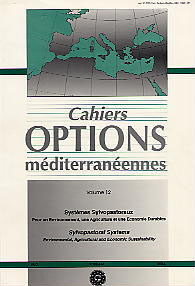| Article précédent | p. 99-102 | Article suivant |
Production de quatre associations Graminées-Légumineuses fourragères sous forêt de Pinus radiata au Chili méditerranéen
In the last twenty years, Central and Southern Chile, have had a large expansion of Pinus radiata plantation, mostly for high quality timber and cellulose production. The silvopastoral utilisation of low density and intensive management forest become a necessity in order to prevent fires. The aim of this work was to assess the growth of the natural pasture and of four grass/legume mixtures under the canopy of a pine forest of 650 trees/ha. Among the grasses, Dactylis glomerata cv. Currie was the most productive in comparison with Phalaris aquatica cv. Sirolán and Festuca arundinacea cv. Manade. Among the legumes, sub-clover had a low contribution to the total biomass (less than 10 per cent) in all the grass/legume mixtures. The perennial legume Lotus uliginosus cv. Maku showed a better adaptation to the low light environment than sub-clover. The light intensity down the canopy at soil level, in a pine forest of 650 trees/ha and 7 to 9 years old, was the most important limitant factor to fodder production. None of the pasture produced more than 2.5 DW/ha/year under the pine forest.
- [ Afficher ]
- [ Télécharger ]
- [ Exporter la citation ]
Vous pouvez télécharger la citation au format :
- [ Imprimer ]
-
Mots-clés
CHILI, GRAMINEE FOURRAGERE, LEGUMINEUSE FOURRAGERE, PINUS RADIATA, SYSTEME SYLVOPASTORALCiter cet article
Ovalle C., Del Pozo A. Production de quatre associations Graminées-Légumineuses fourragères sous forêt de Pinus radiata au Chili méditerranéen. Systèmes sylvopastoraux. Pour un environnement, une agriculture et une économie durables . Zaragoza : CIHEAM, 1995. p. 99-102. (Cahiers Options Méditerranéennes; n. 12). Réunion du Groupe de Travail Méditerranéen du Réseau Interrégional FAO/CIHEAM de Recherche et Développement sur les Pâturages et les Cultures Fourragères, 1995/05/29-1995/06/02, Avignon (France). http://om.ciheam.org/om/pdf/c12/96605496.pdf



